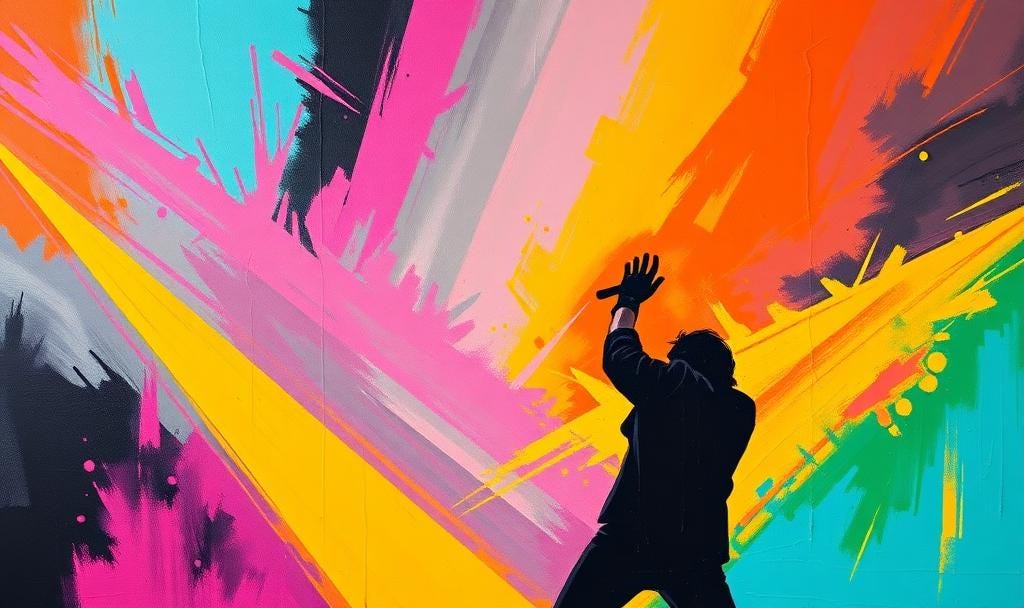This is part of my Pop Music in the ‘80s series.
The Birth of Arena Rock
By the late ‘70s, rock bands had outgrown small clubs and theaters, moving into massive arenas and stadiums that could house tens of thousands of fans. The 1980s took this movement to another level, evolving into arena rock, a style that embraced bombastic anthems, soaring guitar solos, and over-the-top performances. The transition of rock from gritty bar gigs to pyrotechnic-filled stadium spectacles changed the industry, making live concerts about the show as the music itself.
Arena rock wasn’t just about playing to bigger crowds; it was about crafting an experience. Coinciding with the rise of MTV, this is understandable, as promoters now had to compete for their audience’s attention with their own music videos. The sound was designed to fill enormous venues, with sprawling drumsets, larger-than-life vocals, and soaring guitar solos. It wasn’t subtle—it was anthemic music meant to be belted out by tens of thousands in unison. This was theatrical rock. It tapped into raw emotion and universal themes of love, heartbreak, and rebellion. And in these unforgettable live performances, the sound systems were always cranked up to 11.
Bands That Defined the Genre
Arena rock thrived with Journey’s radio-ready hooks, Bon Jovi’s arena-filling choruses, and Def Leppard’s polished production. Other giants like Foreigner, REO Speedwagon, and Styx helped define the sound, characterized by emotionally charged lyrics, singalong choruses, and massive, reverberating drums. These bands perfected the balance between hard rock grit and pop accessibility, ensuring their songs could dominate rock radio while still charting on pop charts.
The signature of ‘80s arena rock was the power ballad, bridging rock’s energy with anthemic emotion. Songs like “Open Arms” (Journey), “I Want to Know What Love Is” (Foreigner), and “Every Rose Has Its Thorn” (Poison) captivated audiences. Without question, rock bands could deliver fist-pumping anthems alongside heartfelt singalongs, and the rock fans loved it! At least many of them did.
MTV’s Role in Arena Rock’s Popularity
The launch of MTV in 1981 allowed rock bands to translate their high-energy stage presence into unforgettable music videos. The visual aspect became just as important as the music itself. This also meant that if they could recreate the concert atmosphere, fans might be more enticed to part with their money to experience the experience. Bands who embraced the video medium often thrived, using music videos to showcase their personalities, performances, and over-the-top aesthetics.
Van Halen’s “Jump” and Bon Jovi’s “Livin’ on a Prayer” became instant classics because of their videos, as the high-energy performances and cinematic visuals elevated them from radio stars to video icons. MTV also gave bands a way to reach international audiences, making arena rock a global phenomenon. Def Leppard’s “Pour Some Sugar on Me” and Europe’s “The Final Countdown” gained massive popularity, proving that arena rock’s appeal wasn’t limited to the U.S.
The Theatrical Experience of Arena Rock Concerts
By the mid-‘80s, a stadium concert was more than a mere live performance—it was an immersive event. Massive light shows, lasers, fireworks, pyrotechnics on stage, and elaborate stage designs became standard. KISS had pioneered this kind of showmanship in the ‘70s, but by the ‘80s, it was the bare minimum industry expectation.
Queen’s internationally broadcast Live Aid performance in 1985 set a new benchmark, proving that arena rock shows could captivate a worldwide audience. Freddie Mercury’s command of the crowd, Brian May’s soaring guitar work, and the band’s undeniable chemistry turned their 20-minute set into one of the most legendary performances in rock history.
The Legacy of Arena Rock
Though grunge and alternative rock would later push arena rock out of the mainstream spotlight, its anthemic style and showmanship remain staples of modern live performances of all . Bands like Foo Fighters, Muse, and The Killers as well as legacy acts like The Rolling Stones and Red Hot Chili Peppers continue the pattern, proving that the love for stadium-sized rock is still alive.
Even today, classic arena rock anthems remain some of the most enduring songs in rock history, often to the chagrin of purist rock fans. Whether it’s a sports stadium blasting “The Final Countdown”, a festival crowd belting out “Don’t Stop Believin’”, or a new generation discovering “Pour Some Sugar on Me”, the spirit of arena rock still echoes through the decades.

